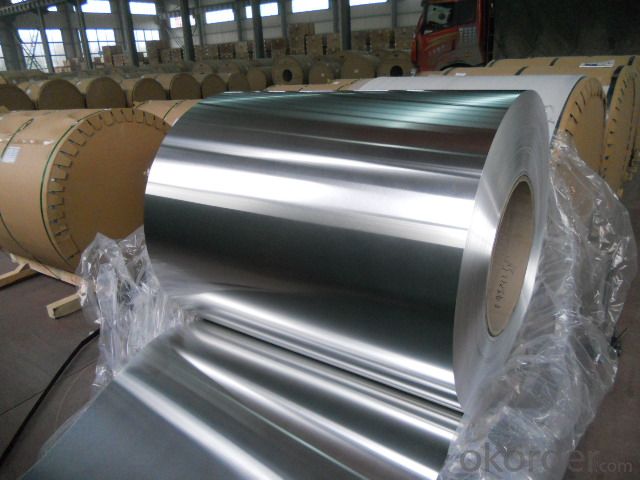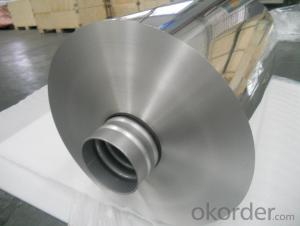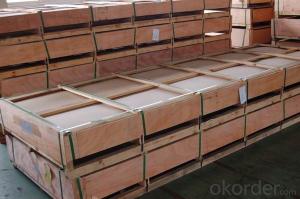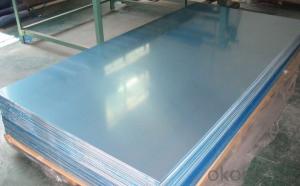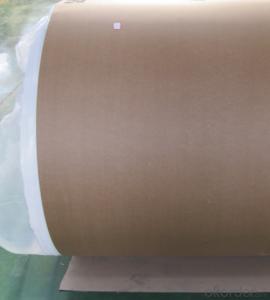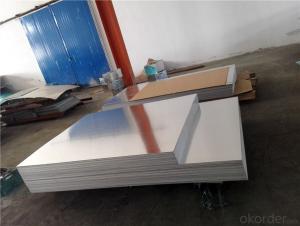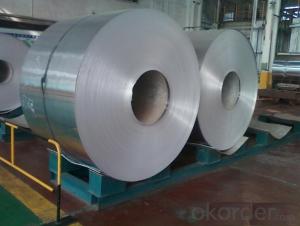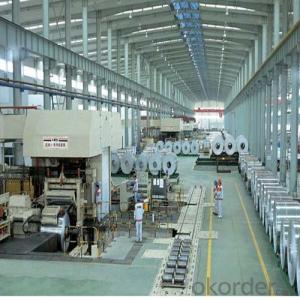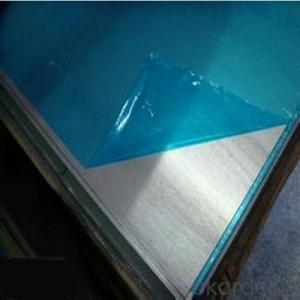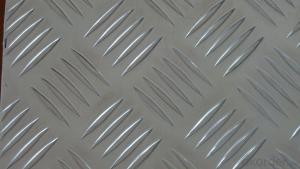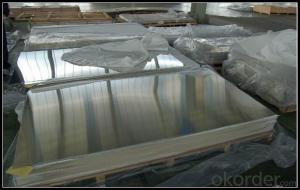Wholesale Aluminum Decorative Sheets for Wall Cladding, Facades, Roofing, Canopies, Tunnels, and Column Covers
- Loading Port:
- Shanghai
- Payment Terms:
- TT OR LC
- Min Order Qty:
- 5 m.t
- Supply Capability:
- 5000 m.t/month
OKorder Service Pledge
OKorder Financial Service
You Might Also Like
We are one of the largest aluminum producer in China, and we also use of aluminum rod, billets, rod, foils, sheet, circles, embossed coil etc.We have produced Aluminum Coils over 10 years, and we have good reputation of the price and quality in North part of China
High Quality and Factory Price Aluminum Coil
Specifications
Grade
| 1000 Series: 1050 1060 1070 1100 1200 1235 etc. 3000 Series: 3003 3004 3005 3104 3105 3A21 etc. 5000 Series: 5005 5052 5083 5086 5154 5182 5251 5754 etc. 6000 Series: 6061 6063 6082 6A02 etc. 8000 Series: 8006 8011 8079 etc. |
Thickness | 0.05~10mm |
Width | <1600mm< p=""> |
Color | Metallic, Solid, RAL or by customer requirements |
Coating paint: | PVDF(Polyvinylidene Fluoride), PE(Polyester ) |
Coating thickness | as per customer’s request |
Gloss | 10-90%(EN ISO-2813:1994) |
Total coating thick | Polyester18~27micron(EN ISO-2360:1995) PVDF27 ~35micron(EN ISO-2360:1995) |
Coating hardness | 2H |
Protective film | PVC film, Colorless transparent or White-black |
Adhesion | 5B (EN ISO-2409:1994) |
Impact resistance | No cracking and peeling (A.S.T.M D2794-1993) |
Flexibility (T-bend) | 0T- 2T |
Temper | H16, H18, H24, H26, H26 |
Certification | ISO9001:2000, CE, SGS |
Coil's standard diameter | 1100mm |
Inner Diameter | 405mm/505mm |
Coil's standard weight | 2000kgs |
Payment | L/C ,T/T |
.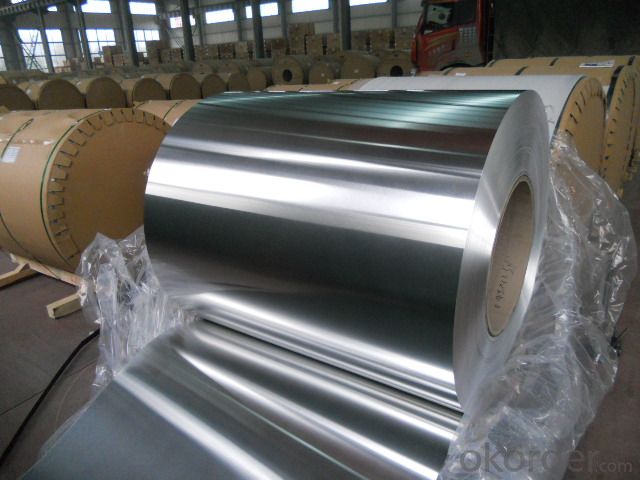
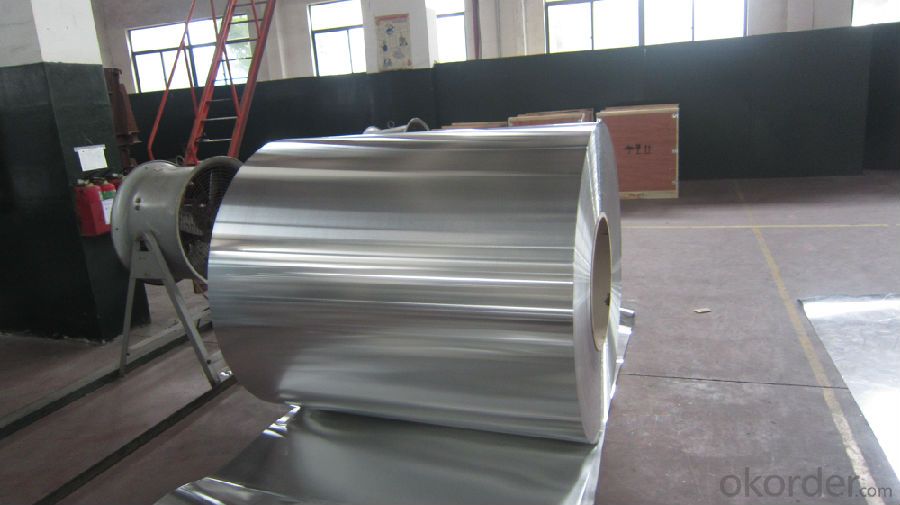
- Q: Are aluminum sheets suitable for wastewater treatment applications?
- Indeed, aluminum sheets prove to be suitable for wastewater treatment applications. With its versatility, aluminum presents several advantages when utilized in wastewater treatment processes. Firstly, aluminum sheets exhibit a high resistance to corrosion, a crucial feature given the harsh and corrosive environment of wastewater treatment plants. This resistance ensures that the aluminum sheets remain intact and unaffected by the chemicals present in the wastewater, thereby preserving their structural integrity. Moreover, aluminum sheets possess exceptional thermal conductivity properties, enabling efficient heat transfer in processes such as wastewater disinfection. This thermal conductivity facilitates the effective elimination of harmful bacteria and contaminants from the wastewater, thereby enhancing the overall treatment process. Furthermore, aluminum sheets are not only lightweight but also durable, making them easy to handle and install in wastewater treatment systems. This characteristic also contributes to their cost-effectiveness, as they require less maintenance and are less susceptible to damage compared to alternative materials. Additionally, aluminum is a sustainable material that can be recycled, thus reducing the environmental impact of wastewater treatment applications. Recycling aluminum sheets aids in the conservation of natural resources and minimizes energy consumption, making it an environmentally friendly choice. In conclusion, aluminum sheets offer a multitude of advantages for wastewater treatment applications. Their corrosion resistance, thermal conductivity, lightweight nature, and recyclability render them a suitable and efficient material for use in wastewater treatment processes.
- Q: Explain the distinctions between aluminum sheets and aluminum foil in terms of thickness, uses, and properties.
- <p>Aluminum sheets and aluminum foil are both made from aluminum but differ in thickness and applications. Aluminum sheets are thicker and more rigid, typically used for construction, manufacturing, and as a packaging material. They offer better strength and durability. Aluminum foil, on the other hand, is very thin and flexible, commonly used for food packaging, cooking, and insulation. It's lightweight and has excellent heat and light reflection properties. Aluminum sheets are often anodized or coated for additional properties, while foil is valued for its purity and malleability.</p>
- Q: What does exterior wall imitate aluminium paint have? Imitate aluminium plate paint is fluorocarbon paint?
- If not missing the cost or use aluminum plate, because the fluorine content of fluorocarbon metal paint paint factory production lot are not enough, so the warranty 10-15 years is just a pretext, and the construction of the technical requirements for workers is relatively high.
- Q: What is the fatigue strength of 101 aluminum sheets?
- The maximum stress level that 101 aluminum sheets can endure without experiencing fatigue failure is known as their fatigue strength. Typically, fatigue strength is determined by subjecting the material to repeated cyclic loading until failure occurs. However, it is important to understand that the fatigue strength can vary depending on various factors, such as the thickness of the sheet, its surface condition, heat treatment, and other mechanical properties. Therefore, it is not possible to provide an accurate value for the fatigue strength of 101 aluminum sheets without specific information about these variables. To obtain the fatigue strength of 101 aluminum sheets, it is recommended to refer to the material's technical datasheet or contact the manufacturer or supplier for precise information. They can provide details on the fatigue properties, including the endurance limit or the stress level at which the material can withstand an unlimited number of cycles without experiencing fatigue failure.
- Q: How do aluminum sheets compare to other metals?
- Aluminum sheets have several advantages when compared to other metals. Firstly, aluminum is very light in weight, making it an ideal choice for applications where weight is a concern, such as in the aerospace industry. Additionally, aluminum is highly resistant to corrosion, which means it can withstand exposure to moisture and chemicals without deteriorating. This makes aluminum sheets suitable for outdoor use and in environments with high humidity or corrosive substances. Moreover, aluminum has excellent conductivity, both thermal and electrical. This makes it a popular choice for heat sinks, electrical enclosures, and other applications that require efficient heat dissipation or electrical conduction. Furthermore, aluminum sheets can be easily shaped and formed, giving them versatility in various manufacturing processes. They can be bent, cut, welded, and machined with relative ease, making them highly adaptable to different design specifications. In terms of cost, aluminum is generally more affordable compared to other metals like steel or copper. This makes it a cost-effective option for many industries, especially for large-scale production or projects with budget constraints. However, it is important to note that aluminum sheets may not be suitable for applications that require high strength or extreme temperatures, as aluminum has lower strength and melting point compared to certain other metals. In such cases, metals like steel or titanium may be more appropriate. In summary, aluminum sheets offer a combination of lightweight, corrosion resistance, good conductivity, versatility, and affordability that makes them a preferred choice in many industries. However, the specific requirements of a project or application should be considered to determine if aluminum sheets are the best fit or if another metal would be more suitable.
- Q: Can aluminum sheet be used for automotive body-in-white applications?
- Yes, aluminum sheet can be used for automotive body-in-white applications. Aluminum's lightweight yet strong properties make it an ideal material for constructing vehicle bodies, providing improved fuel efficiency and overall performance.
- Q: What are the different methods of surface preparation for aluminum sheet?
- There are several methods of surface preparation for aluminum sheet, depending on the desired finish and application. 1. Chemical Cleaning: This method involves using chemical solutions to remove any dirt, grease, or surface contaminants from the aluminum sheet. The sheet is typically soaked in the cleaning solution and then rinsed thoroughly to ensure all residues are removed. 2. Mechanical Cleaning: This method utilizes mechanical processes such as sanding, grinding, or brushing to remove any surface imperfections or coatings. Sanding or grinding can be done using abrasive materials or tools, while brushing involves using wire brushes to scrub the surface. 3. Etching: Etching is a process that uses chemicals to create a roughened surface on the aluminum sheet. This can be done by applying an acid or alkaline solution to the surface, which removes a thin layer of the metal and creates a textured finish that improves adhesion for subsequent coatings or finishes. 4. Anodizing: Anodizing is a specialized surface preparation method that involves creating an oxide layer on the aluminum sheet. This is achieved by immersing the sheet in an electrolytic solution and passing an electric current through it. Anodizing not only enhances the appearance of the aluminum sheet but also provides a protective layer against corrosion. 5. Conversion Coating: Conversion coating is a chemical process that converts the surface of the aluminum sheet into a more corrosion-resistant material. This can be achieved through methods like chromate conversion coating or phosphate conversion coating. These coatings provide an added layer of protection and can also improve the bonding of subsequent coatings. Each method of surface preparation for aluminum sheet has its own advantages and is chosen based on the specific requirements of the application. It is important to select the appropriate method to ensure proper adhesion of coatings and finishes, as well as to enhance the overall durability and appearance of the aluminum sheet.
- Q: Is it possible to use aluminum sheets as a material for the exterior walls of a building?
- <p>Yes, aluminum sheets can be used for exterior siding. They are known for their durability, resistance to corrosion, and low maintenance requirements. Aluminum siding is lightweight, easy to install, and can be painted to match various architectural styles. It is also resistant to harsh weather conditions and pests, making it a popular choice for many homeowners and builders. However, it is important to ensure proper installation to maximize its benefits and longevity.</p>
- Q: Can aluminum sheets be painted?
- Indeed, it is possible to paint aluminum sheets. However, in order to ensure that the paint adheres well and lasts, some preparation may be necessary. The first and most crucial step involves thoroughly cleaning the surface of the aluminum sheet to eliminate any dirt, grease, or corrosion. This can be accomplished by employing a mild detergent and water or a specialized aluminum cleaner. Once cleaned, the surface should be completely dried before proceeding with the painting process. For enhanced paint adhesion, it is recommended to apply a primer specifically designed for use on aluminum. This primer will establish a bond between the aluminum surface and the paint, resulting in better adhesion and a longer-lasting paint job. Once the primer has dried, an appropriate paint can be applied to the aluminum sheet. It is important to select a paint that is compatible with aluminum and provides excellent adhesion and resistance to weather elements. Acrylic or epoxy-based paints are commonly utilized when painting aluminum. Before fully committing to the painting process, it is advisable to test a small inconspicuous area to ensure that the paint adheres properly and achieves the desired finish. Additionally, it is imperative to adhere to the manufacturer's instructions for the specific paint and primer being used, including adhering to proper drying times and application techniques. In conclusion, while it is possible to paint aluminum sheets, it is crucial to adequately prepare the surface, utilize an appropriate primer and paint, and follow the recommended procedures in order to achieve a long-lasting and visually appealing paint finish.
- Q: Can aluminum sheets be used for heat exchangers?
- Yes, aluminum sheets can be used for heat exchangers. Aluminum is widely used in heat exchangers due to its excellent thermal conductivity and corrosion resistance properties. Its lightweight nature also makes it a preferred choice for efficient heat transfer in various applications.
Send your message to us
Wholesale Aluminum Decorative Sheets for Wall Cladding, Facades, Roofing, Canopies, Tunnels, and Column Covers
- Loading Port:
- Shanghai
- Payment Terms:
- TT OR LC
- Min Order Qty:
- 5 m.t
- Supply Capability:
- 5000 m.t/month
OKorder Service Pledge
OKorder Financial Service
Similar products
Hot products
Hot Searches
Related keywords


